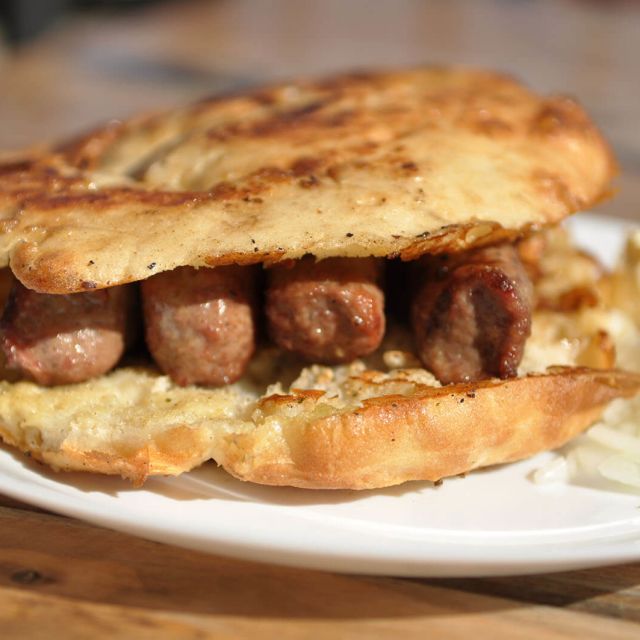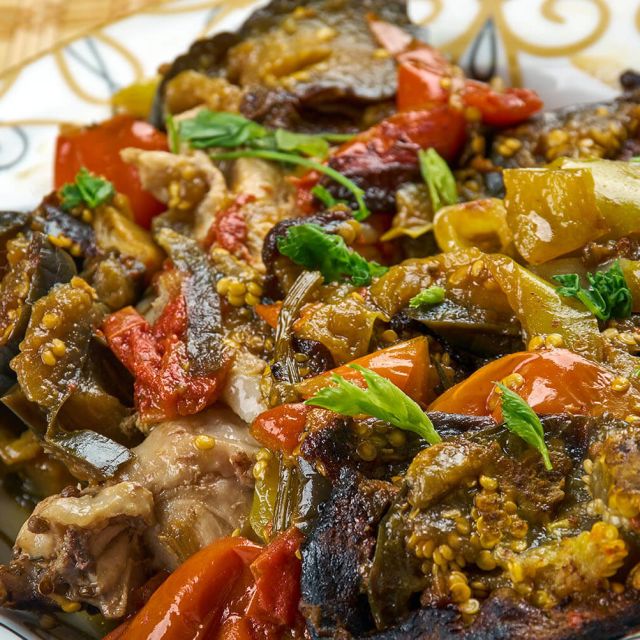Feast on classics like pierogi and schnitzel or expand your palate with new-to-you eats at these Toronto restaurants.
There are few cuisines as underestimated as Eastern Europe’s. Often reduced to its most basic dishes, food from the Baltics to the Black Sea and into Georgia uses figs and plums, barley and buckwheat, cheese and yogurt, mutton and partridge, pike, carp, cherries, and pomegranates to create dishes as varied as any of the world’s great culinary traditions.
If you’ve limited your exposure to the all-you-can-eat pierogi Wednesdays at Future Bistro, or the schnitzel at V’s—though both are excellent options—you’ve got a whole new world to discover.

Eastern European restaurants in Toronto by neighbourhood
Roncesvalles
Cafe Polonez, one of the stalwarts of this traditionally very Polish neighbourhood, is offering daily meal specials for $20.95.
Etobicoke/Dundas & Shaver
A visit to Armenian Bistro isn't complete without trying their beef cheeks or chanaxi stew.
Bloor West Village
Vatra Deli is the place to go for stick-to-your-ribs Ukrainian comfort food like cabbage rolls and pierogi. As a bonus, you can load your cooler with imported deli meats, cheeses and other grocery finds.
Scarborough/Golfdale Gardens
Prague Restaurant specializes in Czech and Slovakian food, including topinky (fried rye bread) and koleno, a pork hock braised in Czechvar dark lager.
North York/Dufferin and Steeles
Tucked between Ukraine and Romania, Moldova’s got some great soups (including a cold bologna soup) and a dish called brizol, made from veal rolled around mushrooms and onions, both of which are available at Moldova Restaurant.
Bathurst & Lawrence
There was a time in Toronto’s not-too-distant history when a “European” restaurant was always Hungarian. As the first generation of immigrants from the 1956 revolution have retired, many have closed, but Europe Bar and Restaurant is still going strong. Try their poppy seed pasta and the classic wooden plate (aka big pile of meat) for two or four.
Markham/Unionville
The Old Country Inn has been serving Austrian food from this 140-year-old coach house since 1978.
More than Pierogies
Frankly, even if you stuck to pierogies (aka varenyky), there’s more to it than potatoes and cheese. Like all the world’s great dumplings, people from Ukraine to Slovenia, Moldova to Czechia put just about anything you can imagine in there: mushrooms, venison, sauerkraut; there are even dessert versions with blueberries, raspberries, strawberries….
But just take a look at the menu at Drom Taberna, and you’ll see just how much there is to discover. Drom Taberna is the result of Shamez Amlani’s decades-long love affair with the region.
Known for its nightly live music scene, Drom has a menu that runs the gamut, from Estonia and Lithuania through Bosnia, Romania, and Poland, all the way to Georgia, with privately ordered liquors from the region, including several rakias, a kind of Eastern European eau de vie that pairs perfectly with the food.

Three dishes to get you started
Cevapi
“Definitely one of the things that the diaspora from the Balkans loves to show off when they come in,” Amlani says of the meat, cheese, and flatbread dish that’s rare to find outside the region, but is a staple of Bosnian cuisine. Made with ajvar and kajmak, and served on lepinja brought in from Sarajevo Grill and Meat, it’s one of the world’s great hand foods.

Ajapsandali
If you go to Ukraine or Poland, Georgian food is all the rage now,” Amlani says. “It really is where Eastern Europe meets the Middle East, without being hot-spicy, the herb-heavy content in Georgian food is absolutely magical.”
His recommendation is ajapsandali, a Georgian ratatouille set apart from the French version by its use of the rare blue fenugreek, not often seen on menus outside the Caucasus.
Goulash
When they started serving it, Amlani said he thought it was pretty good. “Then one guy ordered it, tried it, and said, ‘I’m a chef, I’m Hungarian. This goulash is OK, but here, let me give you a better recipe.” He gave Amlani a few pointers (including mixing sweet and smoky paprika and never ever using celery), and he says the new goulash, which is available ready-to-eat or frozen, is even better now.





